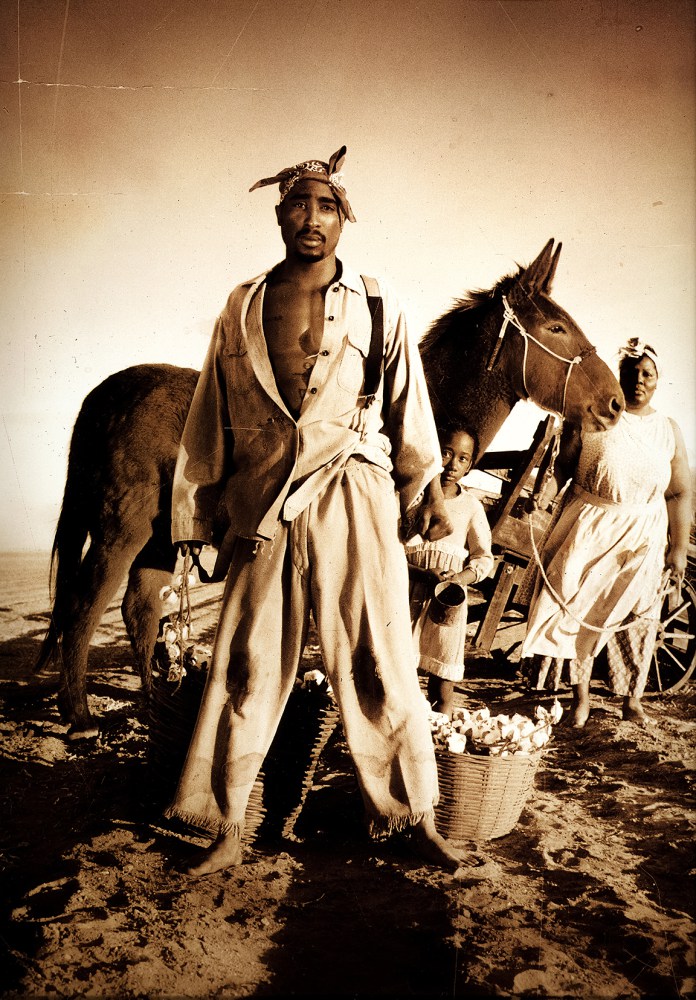The True Story
by Ricardo Guthrie
Few slogans have had greater significance or affected African Americans more deeply than the call for “forty acres and a mule.” In 1991, the average Black man or woman is only vaguely familiar with the historical reference–and if filmmaker Spike Lee had not named his production company “40 Acres & A Mule,” thousands of Blacks could not begin to answer the trivia question: “how did the slogan arise, and exactly what is its meaning?”
To answer this question, we must examine the status of indentured African Americans–Black slaves–during the Civil War, which was America’s “Second Revolutionary War” in many respects. Although President Abraham Lincoln and congress steadfastly denied that slavery and the status of African Americans was the cause of the Civil War, it is clear that the destruction of the “peculiar institution”led the way to a Union victory and the ultimate reunification of the country.
There was no provision for a mule, and the land was leased not given away free of charge…
The states could never have united so long as slavery existed and the status of African Americans–North and South–remained unresolved. The Civil War was ostensibly a clash between two competing economic and political systems; its resolution, however, was achieved on the backs of Blacks. Though Black citizenship was granted, the economic and political status of African Americans was given short shrift. As a result, Blacks to this day suffer second class status.
Southerners fought bitterly to maintain their way of life, and dominating Blacks was a key ingredient in their quest to maintain the status quo while conceding defeat to the Union army. Long before the final battle of the war was fought, however, the issue of African American economic and political status was forced by the masses of Blacks who bolted from the plantations, or who were seized as contraband of war by Union generals. In November 1861, for example, under the direction of the Treasury Department, freed Blacks in the Sea Islands were allowed to work abandoned lands and were actually paid wages. General William Tecumseh Sherman, after his sweep through the South, declared that
The islands from Charleston south, the abandoned rice-fields along the rivers for thirty miles back from the sea, and the country bordering the St. John’s River, Florida, are reserved and set apart for the settlement of Negroes now made free by act of war.
Although his “Field-order No. 15” of 1865 was overturned by President Lincoln, it undoubtedly influenced the thinking of congressmen and others who struggled to develop a uniform policy for handling newly-freed men and women.
It was recommended that a “Bureau of Emancipation” be established to settle the affairs of African Americans, and after a number of failed compromises, the “Act to Establish a Bureau for the Relief of Freedmen and Refugees” was passed by Congress in March, 1865.
The Freedmen’s Bureau ratified the idea, previously raised under the exigencies of war and among abolitionists, that the “tillers of the soil” should be given land and a fresh start as new citizens of the country.
Under the auspices of the War Department, General Oliver Otis Howard, a 35-year-old soldier from Maine who had fought at Gettysburg and marched with Sherman “to the sea,” was appointed commissioner on May 12, 1865; the Freedmen’s Bureau’s constitution was issued on May 19.
The Freedmen’s Bureau–virtually a mini-government, according to DuBois–ratified the idea, previously raised under the exigencies of war and among abolitionists, that the “tillers of the soil” should be given land and a fresh start as new citizens of the country. The Act of 1865 specifically stated:
-
….tracts of land within the insurrectionary states as shall have been abandoned, or to which the United States shall have acquired title by confiscation or sale, or otherwise, and to every male citizen whether refugee or freedmen, as aforesaid, there shall be assigned not more than fortyacres of such land….
There was no provision for a mule, and the land was leased, not given away free of charge, to freedmen for a term of three years (most freedmen having been unable to purchase the land outright). What happened next was most cruel. The Freedmen’s Bureau, which never rested on firm political ground, and lacking strong support from President Andrew Johnson (who vetoed extensions of the Bureau twice and granted pardons to confederate plantation owners when Congress overrode his vetoes), was ineffective and essentially unable to protect the rights of freedmen land tenants. When President Johnson insisted on pardoning confederate planters, most of the land formerly rented to ex-slaves was returned to white Southern planters. In addition, many Blacks who bought land directly from the government lost their deeds as well.
The Freedmen’s Bureau, with 900 officials working throughout the South, was responsible for appropriating some $15 million, overseeing the distribution of 800,000 acres of “abandoned land,” and handling the affairs of some 4 million “freedmen.” By 1874, less than 350,000 acres, according to DuBois, remained in control of Black hands. The vast majority of African Americans were forced to accept the terms of the sharecropping system (farming the land of former slavemasters in exchange for a portion of the crop) and became virtual slaves as a result of the repressive “Black Codes” adopted by Southern states to terrorize Blacks and destroy burgeoning Black economic and political development.
In sum, Blacks only got a written promise of 40 acres, and they never got the mule. They received food, clothing relief, citizenship, the Bill of Rights, and some “4,000 day, night and industrial schools”–including the Black Colleges, which were established by the Freedmen’s Bureau and various missionary and freedmen aid societies. How different would things be if African Americans had received their 40 acres and a mule? It is still a question worth asking, and a venture worth pursuing. “Free the Land” was a cry of Black nationalists during the 1960s, and the precedent for receiving reparations has already been made. Perhaps we’ll get our 40 acres yet–never mind the mule!
(References: The Souls of Black Folk, W.E.B. DuBois;
From Slavery to Freedom, John Hope Franklin;
From Plantation to Ghetto, August Meier and Elliott Rudwick;
Chronicles of Black Protest, Bradford Chambers, ed.;
The Negro People in American History, William Z. Foster;
The Black Almanac, 4th Edition.)

